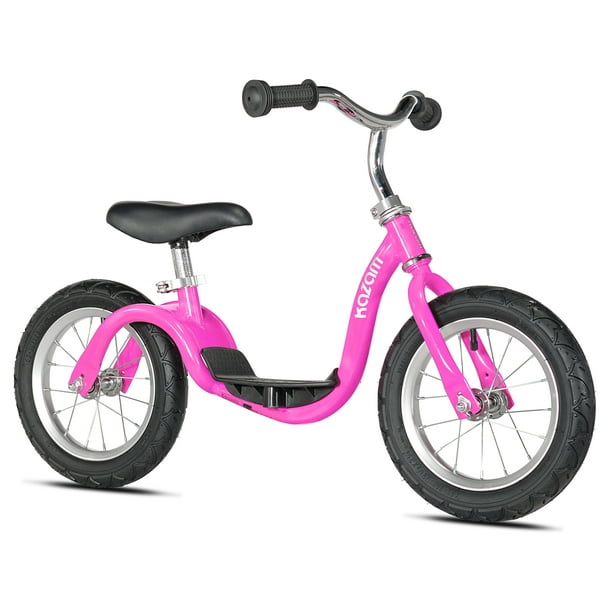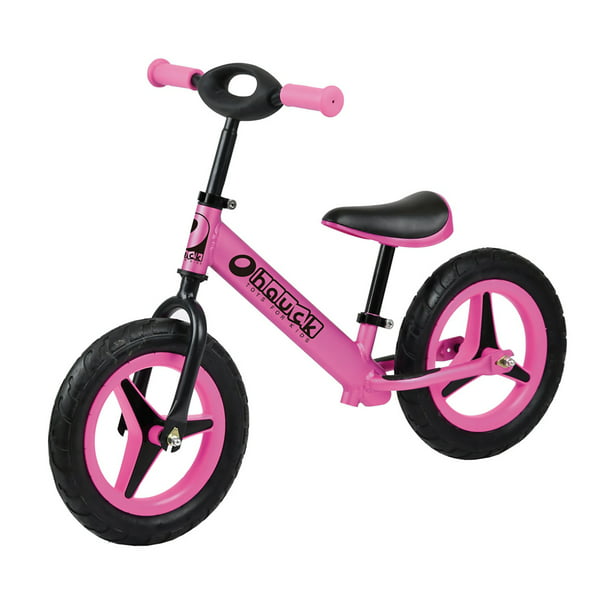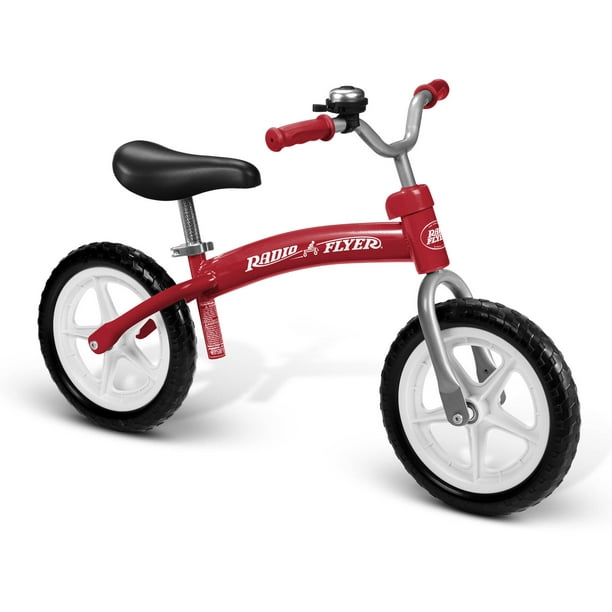Are you scared stiff to watch kids zooming about on balance bikes without pedals or even brakes? Most parents are apprehensive about them, but these unknown facts about balance bikes revealed by experts should allay your fears.
As it turns out, balance bikes are a much better way to teach kids to ride. Read on to find out all about balance bikes, how they work, and why they are preferred over the other options available.
What Are Balance Bikes
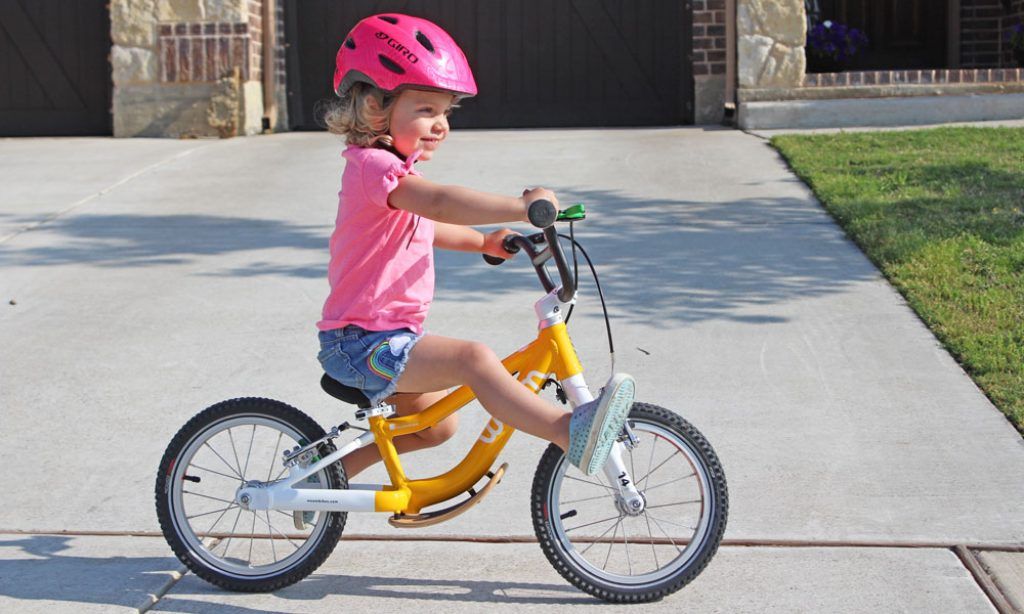
If you imagine a normal bike with the pedals and drivetrain removed, you pretty much have yourself a balance bike. However, balance bikes are much simpler, lighter, and built low to the ground.
Since they are designed to be propelled by pushing off the ground with the feet, balance bikes are also called run bikes or dandy horses.
Since they look just like other bikes, chances are that most people have never even heard about balance bikes until they had to teach their kids to ride a bicycle. There is much more to them than meets the eye, as you will find out below.
A Bit of History
The first two-wheeled vehicle ever was invented in 1817 by a German named Karl Drais. He named it the Laufmaschine or ‘running machine’, and it became the predecessor to the velocipede which was the parent of the modern bicycle.
The English had a rather fancy name for the velocipede, calling it a dandy horse. Imagine adults coasting along in wooden contraptions with no springs or pneumatic wheels, and you can imagine why this painful ride was not popular.
However, this early colorful history has little connection to the modern balance bike, except for the inspiration and original design. It was in 1997 that another German named Rolf Mertens, a woodworker, designed the running bike as we know it.
Rolf named that model the LIKEaBIKE. It became an instant hit in Europe, America, and China due to its simplicity and effectiveness. Today, there are many models and different types of balance bikes.
How Balance Bikes Work
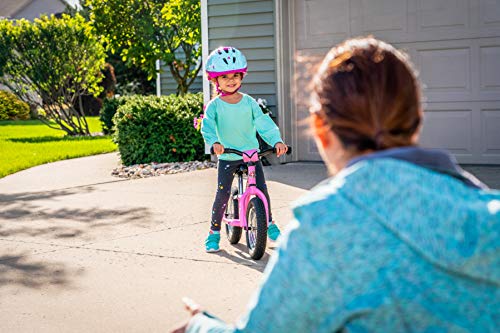
The aim of any balance bike is to teach kids how to ride and have lots of fun while at it. At first glance, it may not seem like much when you see a kit walking and holding onto the handlebars.
Once the kid starts to gain balance and trust their weight to the seat, though, the learning magic begins. They have full control of the handlebars, while their feet at either side of the bike provide balancing.
When cornering, the kids will learn intuitively how to turn into the corner, how to countersteer, among other crucial lessons. Herein lies the guiding principles of how a balance bike works.
- By letting the child use their legs to balance, the bike helps them learn the dynamics of staying upright unaided.
- It helps kids gain confidence as they start to coast about by pushing off. When they have gained enough balance, it is not uncommon to see them zoom downhill at frightful speeds.
- Some bikes have brakes to help kids learn how to regulate speed.
- Unlike tricycles, balance bikes allow kids to lean the bike when cornering at speed.
- All things considered, a balance bike is meant for just that – help the kid gain an intuitive sense of balance and coordination naturally and safely.
All these things sound fun, but you may wonder what sets balance bikes apart from tricycles and normal bikes. After all, you learned the same way, right?
Balance Bike Vs Training Wheels
If you haven’t heard already, tricycles and training wheels are about the worst way to teach a kid to ride a bicycle. Lots of research and studies have been conducted, such as this one published by ResearchGate.
The conclusion has always been that training wheels teach kids how NOT to ride a bike. The reason is that to ride a bike, two things are required: motive power (pedaling), and balance.
Training wheels have pedals, which solves the easier of the problems. However, balance is much more difficult to acquire. Even in the early days of the dandy horse, adults were reportedly terrified of taking their feet off the ground.
The balance bike is such a genius solution to this problem because kids get to learn balancing and motion at the same time. It avoids overwhelming them with the dynamics of pedaling, which can be added later at their own convenience.
Not to mention that three wheels are terrible at cornering. They are more unstable and do not teach the basics of countersteering. Once the kids move to a two-wheeler, they have to unlearn the wrong ideas and practice new ones.
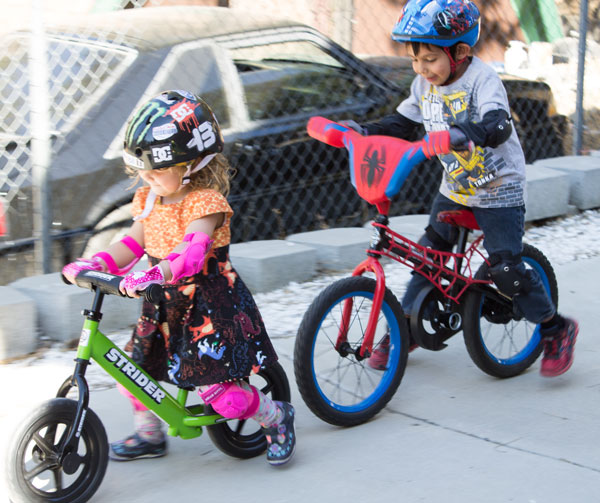
Balance Bike Vs Normal Bike
Normal bikes, which in this case refers to children’s bikes with full functionality, have a much harder learning curve for kids. Besides being much heavier and complicated to figure out, they are also dangerous.
For a 2 or 3-year old, learning to steer a bicycle while pedaling is a massive feat of coordination. Very few kids can achieve that without a few bruises.
Instead of taking your kids through such a tough learning curve which may likely discourage them from bicycles forever, it is much better to just let them get the basics with a balanced bike.
Once the basics of balancing, cornering, braking, and steering are ingrained, pedaling will come naturally. Kids find it much easier to graduate to a normal bike after going through a balance bike first.
Benefits of a Balance Bike
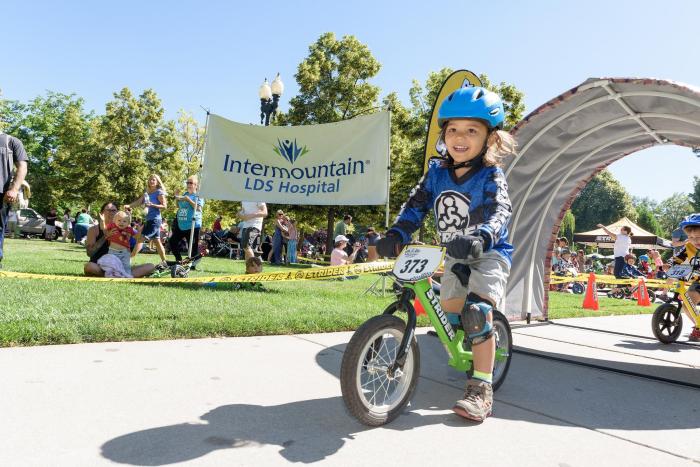
All things considered, balance bikes are the perfect option for kids to learn riding. They are a cross between the usual bikes and tricycles and are perfect for kids. There are even balance bikes for adults, after the manner of the dandy horse.
If you are wondering about whether balance bikes are good for your kid, here are seven reasons to convince you.
They are easy to use
Running bikes are super easy to use. So easy, in fact, that most kids don’t even need to be taught how to use them. Even toddlers get the hang of it once they have figured out how to swing their legs over the handlebars.
As soon as your child can walk, they can use a balance bike. No other qualifications are needed.
The transition to normal bikes is seamless
The same principles that balance bikes teach are the same ones that kids can apply to normal bicycles and even motorcycles later in life. This includes leaning into corners, getting the feel of the bike, and countersteering.
Plus, by the time they are ready for pedals, they will be tired of the limited mobility offered by balance bikes, and the transition will be more fun and exciting for them.
Balance bikes are safe for kids
Despite what you may think, balance bikes are very safe for kids. It can be quite had for tiny 3-year-old legs to push a bike at 50 mph, and even downhill expeditions don’t present a significant danger.
The only thing that is likely to get wounded when accidents happen is confidence, so make sure to use a soft helmet and knee pads when training them. Also, keep them away from obstacles, cars, glass, and potential hazards like potholes.
Kids feel balance bikes are cool
Even with all the evidence that training wheels are counterproductive, many parents still buy them for your kids. When your kid learns that he is the only one riding a two-wheeler at the park, he will be literally crowing with pride.
Balance bikes build strength and coordination
All that pushing off, steering, stopping, and cornering makes exercising fun for kids at any age. They will probably get into competitions soon enough, but even routine practice is a great way for them to get outdoors and exercise.
The fine motor skills required in coordinating a balance bike to perfection come in handy later in life.
They are cheap and lightweight, a plus for parents
Compared to normal bikes, balance bikes are a much more affordable and viable option for parents. Their simple design makes them the cheapest bikes of all, even cheaper than tricycles.
For parents who do not want to spend a fortune on kid’s bicycles, balance bikes are the perfect solution.
Disadvantages of Balance Bikes

They are limited in capability
Kids soon grow tired of having to push off on the ground every time. They will want to move faster, especially if they want to get competitive with others.
Extra cost
For some people, even the cheapest balance bikes don’t justify their cost compared to a good children’s bike bought outright.
Most don’t have breaks
Even though balance bikes are not likely to be going very fast, it is a good idea to have brakes installed on your child’s bike. Unfortunately, many manufacturers are yet to figure that out.
How to Teach Your Kid to Use a Balance Bike
Once your kid can walk, it is time for them to learn how to ride. The age bracket for balance bikes is between 18 months and 7 years, with different sizes of bike for each age bracket.
If you want to teach your kid to ride a running bike, here are a few pointers.
- Find a flat open space without potential hazards, rough surfaces, obstacles, and jeering children.
- Prepare the child trainee by putting on the requisite protective gear such as a helmet, knee pads, and good shoes.
- Teach them how to use brakes if they are present.
- Push off. You have to provide additional support as they begin, laced with loads of encouragement.
FAQs
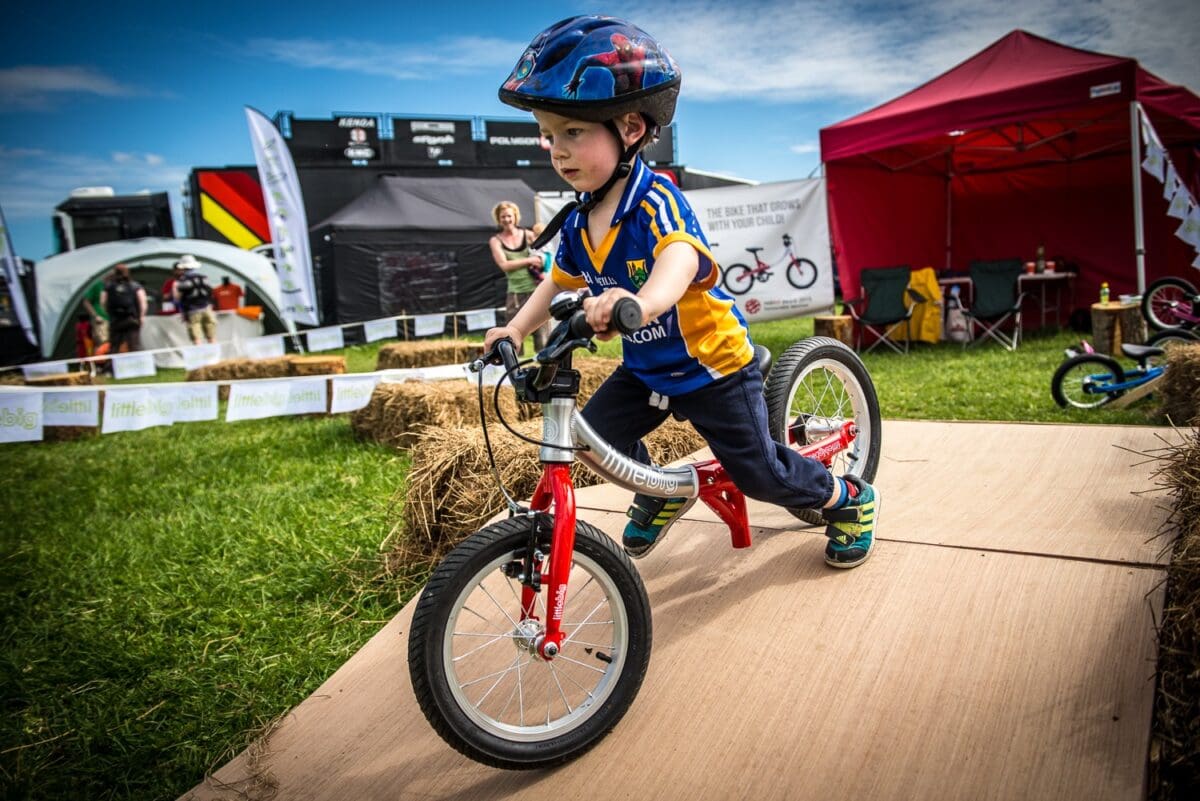
What is the best age for a balance bike?
Children between 2 and 7 years can use a balance bike, so long as they can walk. The bike provides them with the support and confidence to develop their intuitive sense of balance.
What makes a good balance bike?
- Fit – A running bike should be comfortable for your child’s height and age bracket. Their feet should be able to rest firmly on the ground, and adjustable saddle height helps you ensure that.
- Brakes – It is always good to go for a balance bike with brakes installed if you can afford it.
- Weight – balance bikes are meant to be lightweight and easy to use. The heavy wooden ones may be too much for frail kids.
- Platforms – bikes such as the innovative Strider have platforms where the child can place their legs while coasting.
Are balance bikes dangerous?
No, so long as they are used properly and precautions are taken. Always make sure your child wears a helmet and has the right footwear when using them. Also, don’t let them get onto roads and always have an adult supervising their riding.
Are balance bikes better than training wheels?
Yes! Balance bikes are a genius idea that helps young kids learn the basics of balancing and steering before they graduate pedaling. Training wheels are counterproductive when it comes to learning balance.
Are balance bikes good for toddlers?
Yes. Balance bikes help very young children develop their motor skills and coordination. Not to mention that they can build their confidence as they learn to handle themselves.
Conclusion
Most adults today probably learned how to ride using training wheels, while the rest went the hard way and did it on actual bikes. However, they may be surprised by the modern way of using balance bikes.
However, balance bikes have proven to be much better than training wheels. They help the child to learn the basics of balancing and coordination while supporting and propelling themselves using their feet against the ground.
Compared to training wheels, these bikes have a gentle learning curve and a seamless transition to actual bikes. They are also safe, affordable, and can be used even by very small kids.
The very first bikes operated on the same principles as balance bikes, in that they required riders to use their feet to provide propulsion. The modern options are more comfortable and better suited for use by juniors.
To get your child to get started on a balance bike, it is important to make sure that it fits their height and age. Have helmets on their heads at all times and supervise their training.
With these precautions, don’t be surprised to see your child coasting at alarming speeds. These unknown facts about balance bikes should enlighten you about how well they work at achieving the ultimate goal: helping kids learn how to ride.


